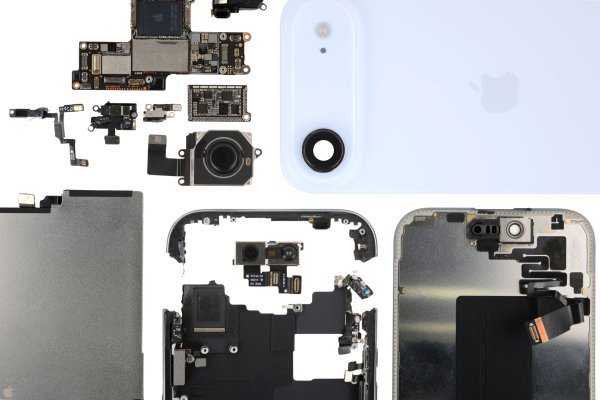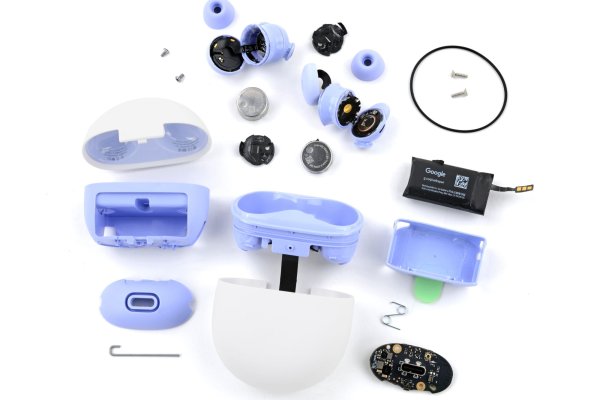The VoltClip is a tiny dongle that uses USB power to tap the iPhone 16’s battery glue, debonding the adhesive and letting you lift the battery cleanly out of the phone. But its utility doesn’t stop there.
Nobody likes a unitasker. Which is why iFixit’s new VoltClip can do way, way more than just release iPhone 16 batteries by electrically debonding the glue that holds them in place. I mean, it’s a 12 Volt barrel-connector power supply juiced by USB. What can’t it do?
Clip-n-Zap
The main purpose of the VoltClip is to hotwire the iPhone 16’s battery. This year, Apple introduced a new kind of battery glue to the iPhone. Instead of using pull tabs to release the adhesive, you apply a voltage across the glue via two tabs, and after a few seconds to a couple of minutes (depending on the voltage used), the adhesive is disabled.
This is way better than pull tabs because it can be done without having to disassemble the phone just to reach the tabs. Without a way to easily release the adhesive, you have to painstakingly flow isopropyl alcohol into the battery area and pry out the battery.

You can use any low-voltage DC source to release the glue, but the VoltClip is simple and convenient, and as we shall see it also has a bunch of other handy uses. You plug its USB-C port into a USB cable of some kind, and attach the alligator clips to the battery adhesive tabs. Then just wait a minute or two, and presto your battery is released.
The out voltage depends on the kind of USB outlet you use. A plain USB-A port or charger will give just 5 Volts, whereas a USB-C PD (power delivery) port can manage up to 12 Volts. If the USB PD source doesn’t support 12V, the VoltClip will operate at the next lowest voltage, 9V. This is sufficient to debond the adhesive in about 90 seconds. The 5V from a USB-A is insufficient to release Apple’s glue, which needs a minimum of 9V to debond.
Power Delivery
Glue debonding is great, and for just $10.95 you can tack this onto your next iFixit order just to have handy the next time you change an iPhone battery. But the VoltClip can do so much more, so you might want to grab a few.
Unplug the alligator clips and what you have is a short cable that takes a USB PD input and outputs 12 Volts through a standard 2.1 mm center-positive barrel connector.

I already own several of these, and I use them for powering electronic music instruments. Instead of buying extra power bricks for drum machines or synths, you can just use your existing USB-C charging bricks with any length of USB-C cable, and pop one of these adapters on the end.

Because USB-C chargers and peripherals negotiate the power requirements every time you plug them in together, and because you can’t fry a gadget by supplying too little voltage (i.e putting 9V into something that requires 12V), very little can go wrong, as long as you’re not trying to power anything that needs less than 12V. One word of caution. Although the VoltClip can also supply 9V and 5V depending on the input it receives, you should test that with a multimeter before plugging it into anything, just in case. If you’re going to be regularly powering something that requires 9V, then consider buying a 9V USB-to-barrel adapter.
Freedom
Even better, you can use the VoltClip to convert wall-powered devices into battery-powered devices. Many USB-C battery packs have PD outputs, so you can now use them to free those 12V gadgets that are usually tethered to a wall. I use one with an Elektron Digitakt sampler/drum machine, for example, with a big PD battery pack velcroed to the back, so I can use it on the sofa without wires. Or with shorter wires at least.
OK, what about using a VoltClip to hot-wire your smart lock? Say you get home and the battery of your smart lock is dead, and like anyone who has come to rely on technology, you’ve left the actual key hanging on the key hook inside the house. The Yale Nest Lock can be temporarily powered by pressing a 9V battery to its underside, but if you have a VoltClip handy, and the correct supply to make it output 9V, then you can use that instead. Just be careful not to fry your lock with 12V, or you could end up sleeping in the garage.
All-in-all, the VoltClip is the perfect thing to keep in either your fixing kit, or your charging bag, along with your cables, USB-C power adapters, and battery pack. It’s tiny, weighs almost nothing, and is bound to come in useful at some point.





1 Comment
The repairman/helpdesk in me wants to get one to do this but on the other hand I don't exactly have the money to do so haha.
Christian Hiscock - Reply